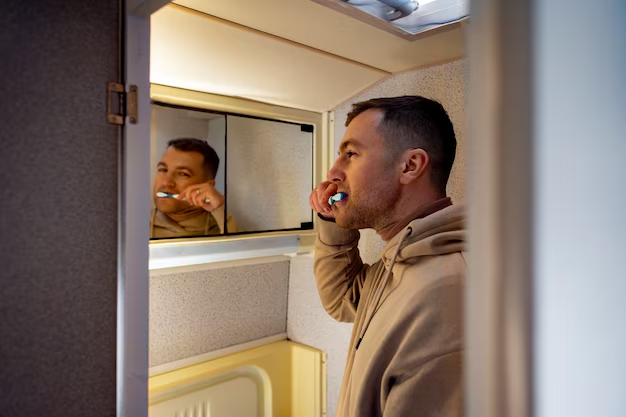Why Won't My Refrigerator Cool? Essential Reasons and Solutions to Explore
There's nothing more frustrating than opening the fridge, expecting a refreshing drink, and instead finding it lukewarm. A refrigerator that has stopped cooling disrupts daily life, potentially leading to wasted food and inconvenience. Fortunately, many common issues have straightforward explanations and practical solutions. Let's delve into the key reasons why your refrigerator might stop cooling and explore ways to address these problems.
⚡ Common Causes for a Non-Cooling Refrigerator
A refrigerator that fails to cool can be attributed to several common issues. Understanding these can empower you to take effective steps toward diagnosing the problem.
1. Power Supply Issues
Sometimes, the most obvious solution is the last one we consider. Checking the power supply is crucial:
- Power Cord: Ensure that the power cord is securely plugged into the outlet.
- Circuit Breaker: Check if the circuit breaker has tripped, interrupting power to the fridge.
- Outlet: Test the outlet with another appliance to confirm it’s working. If the outlet is faulty, it may need replacing.
2. Thermostat Settings
A surprisingly common cause of cooling issues is the thermostat setting. If it's accidentally set too high, the fridge may not maintain the desired temperature.
- Incorrect Setting: Confirm the thermostat is set between 37-40°F (3-4°C) for the fridge compartment and 0°F (-18°C) for the freezer.
- Malfunctioning Thermostat: If settings are correct but there's no cooling, the thermostat itself could be faulty.
3. Blocked Vents
Refrigerators work on circulating cold air throughout the compartments. If vents are blocked, cooling can be uneven or ineffective.
- Overpacked Shelves: Ensure that food items do not block vents located inside the back wall of the refrigerator.
- Vent Damage: Inspect vents for damages or obstructions that might impede airflow.
4. Dirty Condenser Coils
The condenser coils are essential for dissipating heat. If they’re covered in dust or grime, they cannot effectively release heat, leading to a non-cooling refrigerator.
- Cleaning: Vacuum the coils located either at the back or beneath the fridge. Clean every 6-12 months for optimal performance.
- Professional Check: If cleaning doesn’t resolve the issue, consider a professional evaluation of the coil performance.
5. Faulty Door Seals
A refrigerator door not sealing properly can result in warm air entering and cold air escaping.
- Seal Test: Close a piece of paper in the door. If it slides out easily, the seal might need replacing.
- Gasket Installation: Replace the door gasket if you identify leaks.
6. Defective Evaporator Fan
The evaporator fan circulates air over the coils, chilling the compartments. If it’s not working, cooling efficiency diminishes.
- Fan Troubleshooting: Listen for unusual noises from the fan which could indicate issues.
- Replacement: A faulty fan may require replacement to restore cooling function.
🛠️ Advanced Issues and Solutions
While the above issues are relatively straightforward, some scenarios might require more advanced troubleshooting:
1. Temperature Control Board
This board sends voltage to the components of the refrigerator, controlling cooling cycles. If it’s defective, cooling can be disrupted.
- Symptoms of Failure: Fridge may run constantly or not at all.
- Professional Diagnosis: A technician can test and replace this part if needed.
2. Start Relay
The start relay powers the compressor, and if faulty, the compressor won't operate.
- Relay Testing: If the fridge clicks but doesn’t cool, the relay is suspect.
- Replacement: This small component might need substituting by a professional.
3. Temperature Sensor
Sensors allow the thermostat to maintain correct temperatures. A defective sensor can send mixed signals.
- Symptoms: Displaying incorrect temperature readings.
- Solution: Use a multimeter to test and replace if required.
📋 Quick Troubleshooting Checklist
Here’s a handy checklist to quickly address a non-cooling fridge:
- 🔌 Check Power Supply: Ensure the fridge is plugged in and circuit breakers are intact.
- 🌡️ Verify Thermostat Settings: Adjust the thermostat if it’s set too high.
- 🍽️ Inspect Vents: Remove any blockages for improved airflow.
- 🧹 Clean Condenser Coils: Regular maintenance prevents overheating.
- 🚪 Test Door Seals: Ensure they’re airtight to prevent temperature loss.
- ☢️ Listen for Fan Issues: Unusual noises can signal a faulty evaporator fan.
🌟 Additional Tips for Refrigerator Maintenance
Maintaining your refrigerator ensures longevity and consistent performance. Here’s how:
- Regular Cleaning: Periodically clean the interior and exterior surfaces.
- Defrosting: While many modern fridges are frost-free, older models may need manual defrosting.
- Organize Contents: Ensure optimal air circulation by not overloading the fridge.
🚀 Moving Forward: When to Seek Help
If after all these steps your refrigerator still won't cool, it might be time to call in a professional. Diagnosing issues like a faulty compressor or control board requires specialized knowledge and tools.
- Warranty Check: If your fridge is still under warranty, refrain from self-repairs to avoid voiding coverage.
- Professional Assessment: A qualified technician can conduct a thorough examination and suggest either repairs or replacement.
Maintaining an optimally cooling refrigerator ensures not only prolonged appliance life but preserves your food and drink quality. With this comprehensive guide, you're well-equipped to tackle the most common issues and know when to seek professional support. Happy troubleshooting!
